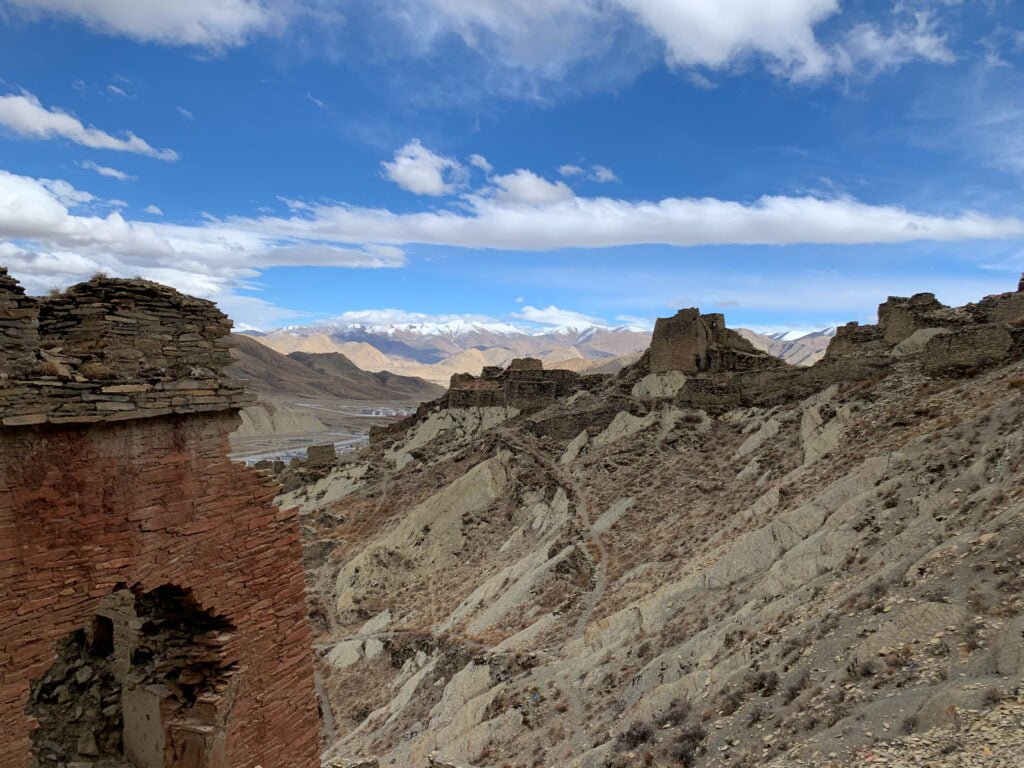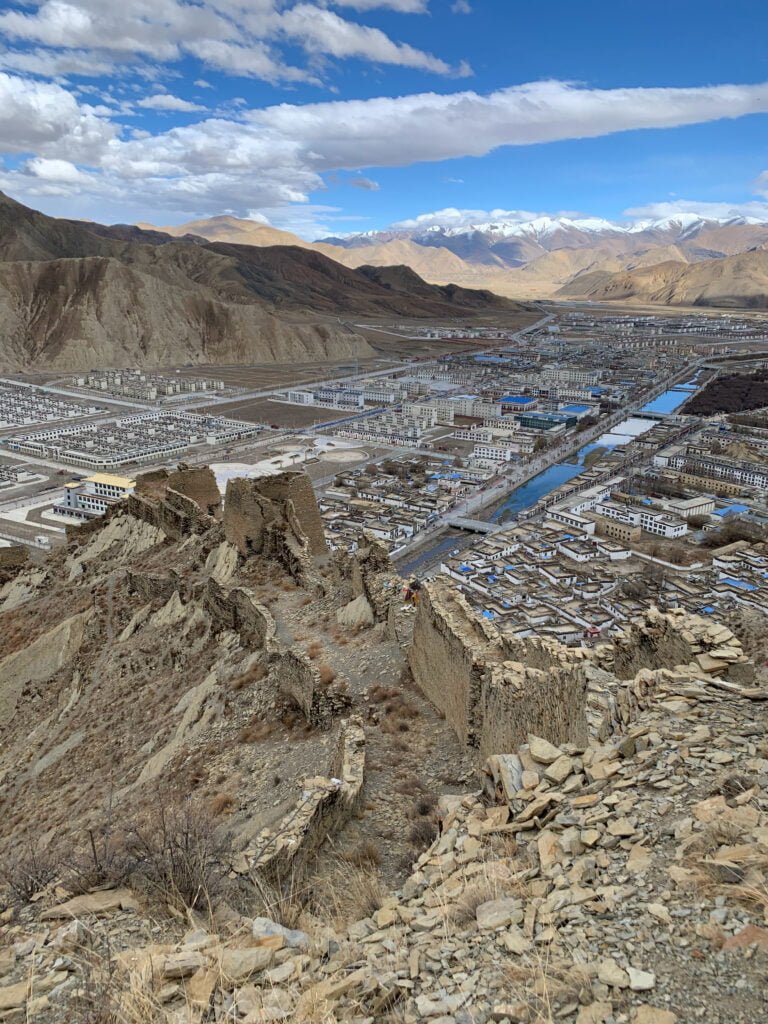A Jewel of Tibetan Spirituality and Architecture
Nestled on the slopes of Kelsang Mountain, also known as Vajra Mountain, in Tingri County, Shigatse, Tibet, the Shelkar Chode Monastery stands as a testament to the region’s deep spiritual roots and architectural ingenuity. Founded in 1385 by the visionary Lotsawa Loden Sherab, this sacred site is a significant center for the Gelug school of Tibetan Buddhism, emphasizing the monastery’s historical and religious significance.

unique Sanctuary of Shelkar-Chode Monastery
Shelkar Chode Monastery’s origins are as mystical as its surroundings. Legend says that before its establishment, the great master Bon Lotsawa Sherab Yönten and his son, both profound spiritual practitioners born in 1276, foretold the emergence of a spiritual institute on Vajra Mountain. Their prediction came to life when Lotsawa Loden Sherab, inspired by two eminent translators practicing in the area, constructed the monastery, embedding it into the mountain landscape using stones and adobe.

A Beacon of Harmony and Devotion
Over the years, Shelkar Chode Monastery flourished, expanding its premises to accommodate over a hundred monks. It became a unique place where various Buddhist sects coexisted harmoniously. The monastery housed seven meditation halls and fifteen temples, with a striking 9-meter-tall gilded statue of Sakyamuni Buddha presiding over the sanctum.
In 1645, under the auspices of the 5th Dalai Lama, the monastery embraced the Gelug tradition exclusively. It has since been home to a lineage of 28 abbots and came under the administration of Lhasa’s Sera Monastery, further highlighting its importance within the Buddhist community.
Resilience and Restoration
The Cultural Revolution brought destruction to the monastery’s ancient walls, but in 1985, a determined restoration effort began. Today, Shelkar Chode Monastery stands renewed, with four halls and over forty monks. It serves as a sanctuary for statues of Vajradhara and Tsongkhapa, among others, continuing its legacy of spiritual guidance.

A Treasure Trove of Tibetan Buddhism
Shelkar Chode Monastery once famed for its printed Tibetan scriptures, still houses over a hundred valuable artifacts. These include hand-printed scriptures, woodblocks, Thangkas, Buddha statues, and ritual instruments, making it a rich resource for historical and scientific research.
Visiting the Shelkar Choede Monastery
- Admission: Free, with donations welcomed.
- Opening Hours: 9:30 AM to 6:00 PM.
- Location: Just 7 kilometers from the county town, accessible by car, chartered vehicle, or a rewarding trek.
- Annual Festivities: Each year, after the harvest, locals celebrate with a vibrant horse racing festival lasting seven days, featuring races, singing, and dancing, imbuing the area with joy and community spirit.
Discover the ancient Shelkar Chode Monastery, a symbol of Tibet’s enduring faith and resilience. Whether you’re drawn to its spiritual significance, architectural beauty, or simply the tranquil ambiance of Tingri, this monastery offers a profound glimpse into Tibetan Buddhism’s heart.
